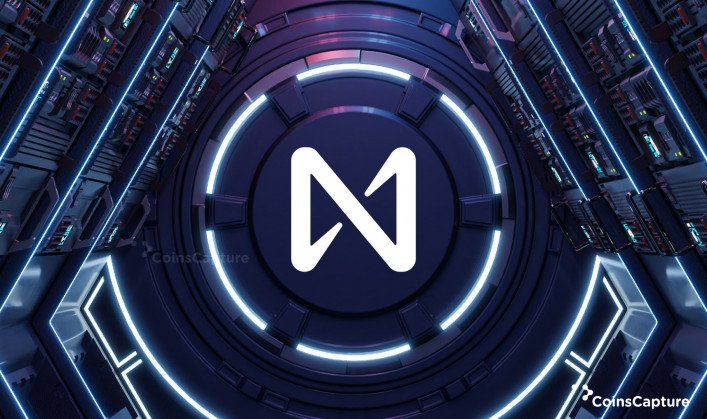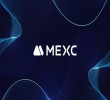7 November 2025
What is NEAR Protocol?
The NEAR Protocol is a piece of code designed to motivate a distributed group of computers to run a system that allows programmers to build and release decentralized apps. Sharding is a core notion of the NEAR Protocol, with the goal of dividing the network's physical infrastructure into many sections so that individual nodes are only responsible for processing a small subset of the network's transactions. It is hoped that sharding would improve network data retrieval and platform scalability by disseminating just subsets of the blockchain to nodes in the network.
Also Read: What Is Avalanche?
The NEAR Protocol has been created by the NEAR Collaborative, its group which maintains the basic code and distributes upgrades to the environment. Its claimed purpose is to establish a network that is safe enough just to handle highly valuable resources such as money or identity as well as highly functional enough to enable them to be usable for common users. Initiatives like Flux, a protocol for creating trades for goods, commodities, and actual events, as well as Mintbase, a platform for minting NFTs, are instances of what may be developed on top of the NEAR Protocol.
Also Read: What Is Cardano?
How Does NEAR Protocol Work?
The NEAR Protocol is a PoS blockchain that offers a sharding mechanism known as "Nightshade" to help it compete with several other platforms. Sharding is a blockchain design that enables every contributing node in the blockchain to keep a limited fraction of the platform’s content. Sharding should enable the blockchain to grow more effectively, while allowing a bigger quantity of TPS and reduced transaction costs. The Rainbow Bridge program included within the NEAR Protocol paves the way for simple two-way coin exchanges between Ethereum as well as NEAR.
What Makes the NEAR Protocol Unique?
NEAR's Nightshade technology dramatically increases transaction output. Nightshade is a kind of sharding that increases the blockchain's throughput by having several groups of verifiers execute transactions in tandem on different sharded chains. In Nightshade, shards generate a smaller piece of the following block, which is referred to as a "chunk." With a block frequency of only one second, NEAR Protocol can process up to 100,000 TPS with almost immediate confirmation times and negligible transaction costs. With human-readable addresses and the ability to construct decentralized apps that follow a registration flow familiar to users, NEAR Protocol simplifies the onboarding procedure compared to other blockchains. Plus, it gives programmers access to reusable parts, which speeds up the launch of complex applications such as token contracts and NFTs.
Who Created the NEAR Protocol?
Alex Skidanov as well as Illia Polosukhin created the NEAR Protocol. Previously, Skidanov worked at MemSQL as their director of engineering. Polosukhin was formerly employed at Google, contributing to the company's AI as well as search engine development. Over the course of a number of funding rounds, NEAR has amassed over $20 million from prominent VC companies like Andreessen Horowitz as well as Pantera Capital. About 35% of the total quantity of 1 billion NEAR coins have indeed been allocated to initial phase traders.
How Many NEAR Protocol Coins Are There In Circulation?
There are a whole of a billion NEAR coins available: 17.2% for Community Grants, 11.4% for Operation Grants, 10% for Foundation Endowment, 11.7% for Early Ecosystem, 14% for Core Contributors, 17.6% for backers, 6.1% for small backers, and 12% for Community Sale. On April 22, 2020, the NEAR Protocol went live on its mainnet with a genesis supply of 1 billion NEAR coins. Every year, 5% of the entire supply is released as epoch prizes to sustain the network, with 90% going to validators (4.5%) as well as 10% to the protocol treasury, which is 0.5 percent overall. Contracts that participate in a transaction get rebates equal to 30% of the transaction charge, while the remaining 70% is burnt. The NEAR coin may be utilized for voting on the distribution of network capacity, verifier node operations on the system, as well as transaction & storage charges.
Why Does NEAR have Value?
The NEAR Protocol's native currency, NEAR, is used to settle transactions as well as application charges, and cost of storage. To use the network's storage and compute resources, NEAR applications should submit storage costs to the NEAR Protocol. These coins are "burned" by the network, effectively taken out of circulation, resulting in a smaller total quantity of NEAR coins. It is the responsibility of machines operating the NEAR Protocol application to guarantee that all transactions are true and visible to verifiers. In exchange for helping to ensure the integrity of the NEAR blockchain, coin holders who act as "Verifiers" are rewarded with new NEAR coins. Every year, the NEAR Protocol adds 5 percent more coins to circulation, with 90% of those coins flowing to verifiers. The remaining funds are invested in the blockchain's infrastructure.
How is the NEAR Protocol Network Secured?
In order to reach agreement, NEAR employs a protocol termed Doomslug, which is a variant of PoS. NEAR Foundation is an independent NGO situated in Switzerland that is responsible for protocol development, environment financing, as well as administration. The system has indeed created an intermediary between Ethereum and NEAR, enabling the exchange of ERC-20 coins between the two networks.
The Bottomline
If you're looking for a rapidly expanding blockchain platform, go no further than the NEAR Protocol. NEAR has had productive several weeks, but it does have much more capacity for growth. Due to its robust and secure infrastructure, the network is a prime location for decentralized applications.
Disclaimer: The author’s thoughts and comments are solely for educational reasons and informative purposes only. They do not represent financial, investment, or other advice.






